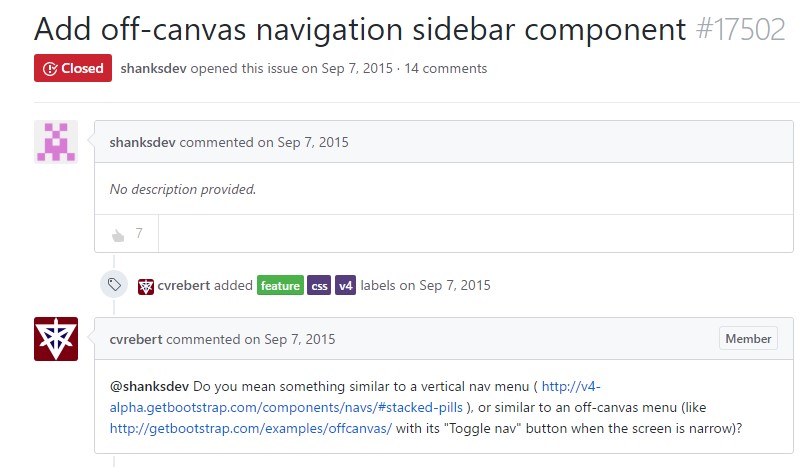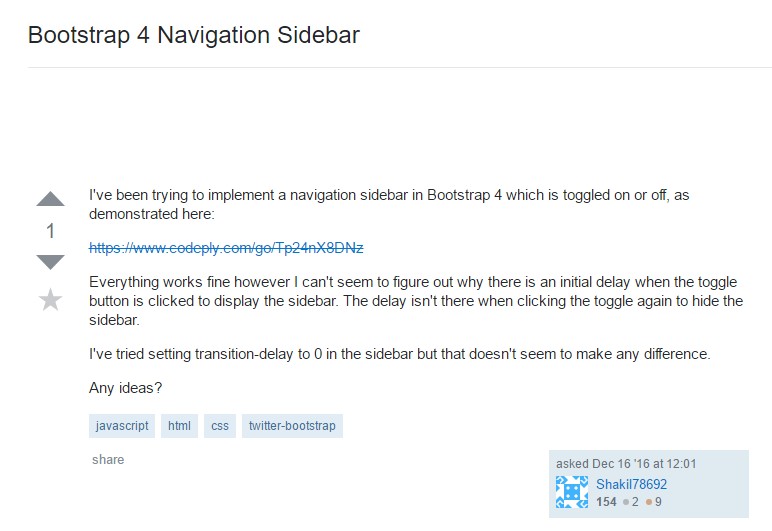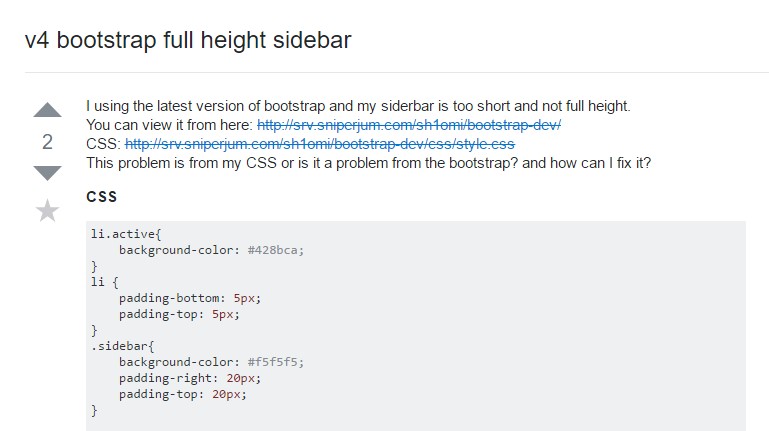Bootstrap Sidebar Dropdown
Introduction
Throughout the most of the web pages we recently discover the material stretches from edge to edge in width with a convenient navigating bar just above and just easily gets resized when the specified viewport is achieved so that somewhat the showcased content fluently applies the full width of the web page provided. Even so at a specific events the wanted purpose the webpages must serve require along with the fluently resizing content location some other section of the available display width to get assigned to a still vertical component along with some hyperlinks and web content within it-- in shorts-- the well-known from the past Bootstrap Sidebar Example is required.
How you can work with the Bootstrap Sidebar Dropdown:
This is pretty old approach but in the case that you definitely want to-- you have the ability to generate a sidebar feature with the Bootstrap 4 framework which in turn along with its flexible grid system additionally provide a handful of classes intendeded specifically for setting up a secondary rank navigating menus being really docked throughout the page.
However let us set up it quick-- by means of just nesting some columns and rows -- It is supposed this could be the easiest method. And by nesting I suggest you can gave a .row component put inside a column one-- it generally functions the identical solution besides the accessible columns in a single line limit-- in case you nest a row inside a column you are able to have up to the column's width extending inner columns within it just before they wrap to a new line.
And so let's say we want a right adjusted Bootstrap Sidebar Toggle with a number of material within it and a primary web page to the left of it. We have to prepare the grid tier down to which we would like to maintain this placement before the sidebar and the main content stack around each other-- let's state-- medium and up. So a workable solution accomplishing this might be this:
Initially we need a container element to hold the rows and columns and given that we are definitely building something a little bit more challenging the .container-fluid class might be the best one to attach it to-- through this it will definitely constantly spread over the entire viewable width accessible.
Next we require a .row to cover the principal structure into which in our situation would certainly be a large column for the material and a smaller sized-- for the sidebar-- let's say we'll split up the width in 9 by 3 columns in width. In this way the 1st column element have to possess .col-md-9 and the next one - .col-md-3 class added.
Next inside these types of columns we are able to just produce some additional .row elements and pack them up up with a number of content creating initially the major webpage and after it-- the materials of the sidebar just like two smaller pages laid out side by side.
A handful of additional recommendations
Additionally in case you need to create a sidebar navigation menu along with the desired .col-* class you can assign it the .sidebar class and wrap the page’s main content into a <main> element applying it the rest width with a .col-* class and appropriate offset equal to the sidebar’s width to make the nicely display side by side.
Additionally in case you need to make a sidebar navigation menu together with the needed .col-* class you can easily delegate it the .sidebarclass and wrap the web page's main web content into a <main> element utilising it the rest size with a .col-* class and appropriate offset identical to the sidebar's width to get the nicely feature side by side.
Check out a number of online video short training regarding Bootstrap sidebar
Linked topics:
Bring in off-canvas navigation sidebar element

Stackoverflow: Bootstrap 4 Navigation Sidebar

V4 Bootstrap full height sidebar

Mobile Bootstrap Navigation Menu Demos
jQuery Bootstrap Hamburger Menu Compilation